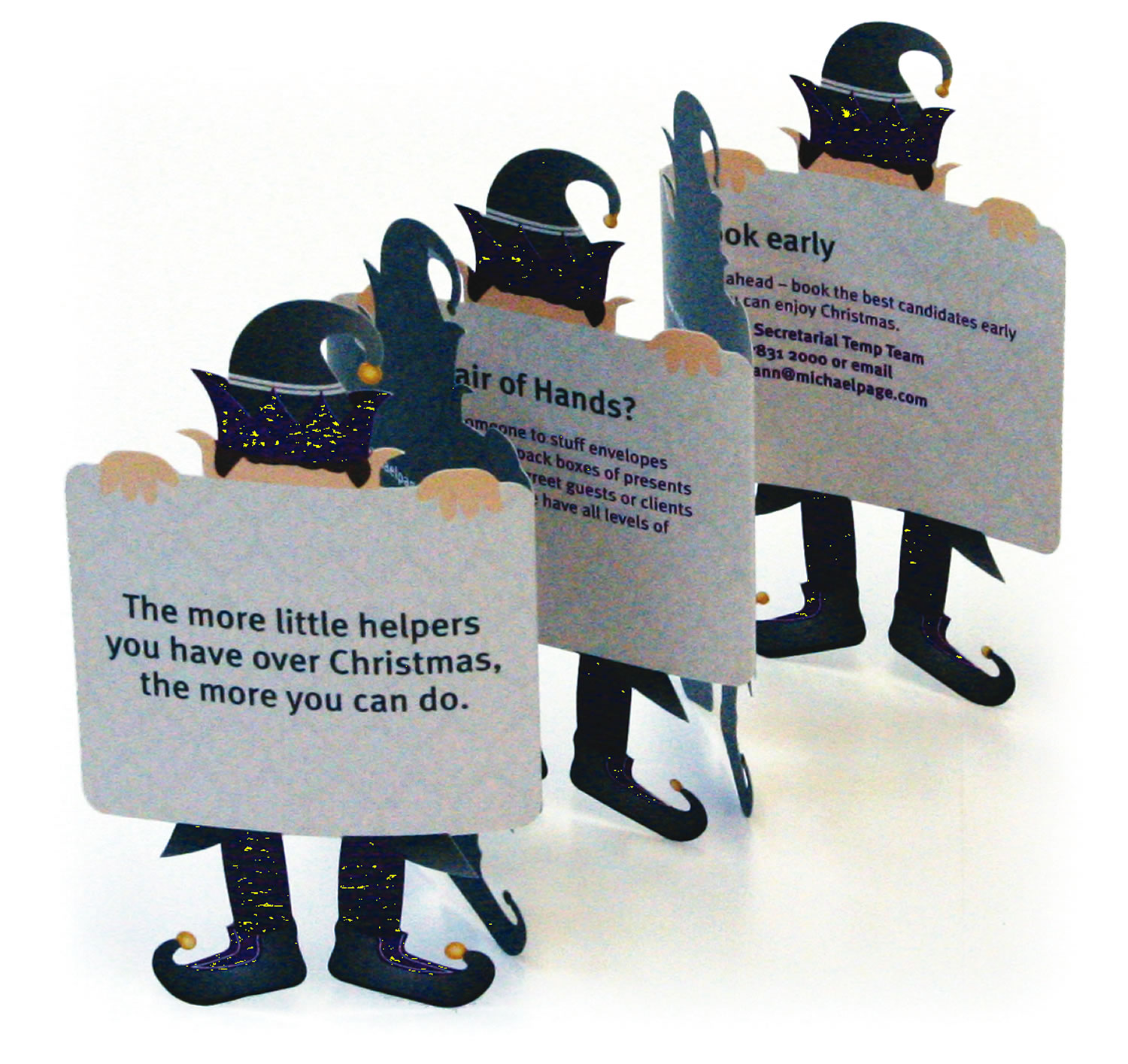Print finishing
This is the process that converts the printed paper to the finished item. The vast majority of print finishing is no more than trimming to size using massive industrial (and very sharp) guillotines.
If there’s a fold in the job a creasing and folding machine is used. For booklets a stapling machine or gluing station are used. But this is just the tip of the iceberg when it comes to this little known area of print production. If used with imagination it can transform your print job from a run of the mill publication to a defining statement about you and your business that leaps off the potential customer’s desk.
Also see: print design and corporate design

Print finishing die cut example
Die cutting
This is a highly skilled forming process where the die cut technician converts a predefined (non-printing) cut line within the design to make a cut shape. The best known example of this would be a jigsaw puzzle.
I’ve seen some wonderful examples of creative die-cutting that completely changed the visual effect of the printed matter. In one case I started my design process by sitting down with the die-cutter to discuss the cut and fold options not only to get the best out of the design but also to minimise paper wastage. Die-cutters also usually hold on file a large range of pre-made die-cut formers.
Embossing
A stamping process that raises the surface of the paper. A bit like a watermark this process can be used to raise an area of the design, ie: your company logo.
Hot foil (or foil blocking)
You cannot print gold or silver using traditional CMYK printing so the hot foil process is a good option if you want to add a special coating to your print job. Typically used on a document cover hot foil can add that special effect using a large range of vibrant colours.
Lamination
Protects the printed document and can add a touch of class. You can even print onto the lamination using a special coating, this is called ‘spot UV’ printing and it really does look nice especially if you want to make an image stand out from the page.
TIP. Visit a print finisher and see the myriad of machines used to create a ready-to-deliver job. They are a lonely breed that printers like to keep hidden away so you’ll find a good print finisher more than happy to show off their skills.
A word about VAT
Due to the high costs of paper, inks and equipment nearly all printers are VAT registered but some printed matter is not subject to VAT. For example (at time of printing): flyers, brochures and pamphlets are exempt VAT.
TIP. If you’re not VAT registered check with your printer to find out what items are VAT chargeable and what items are not. It could change your marketing material content.

